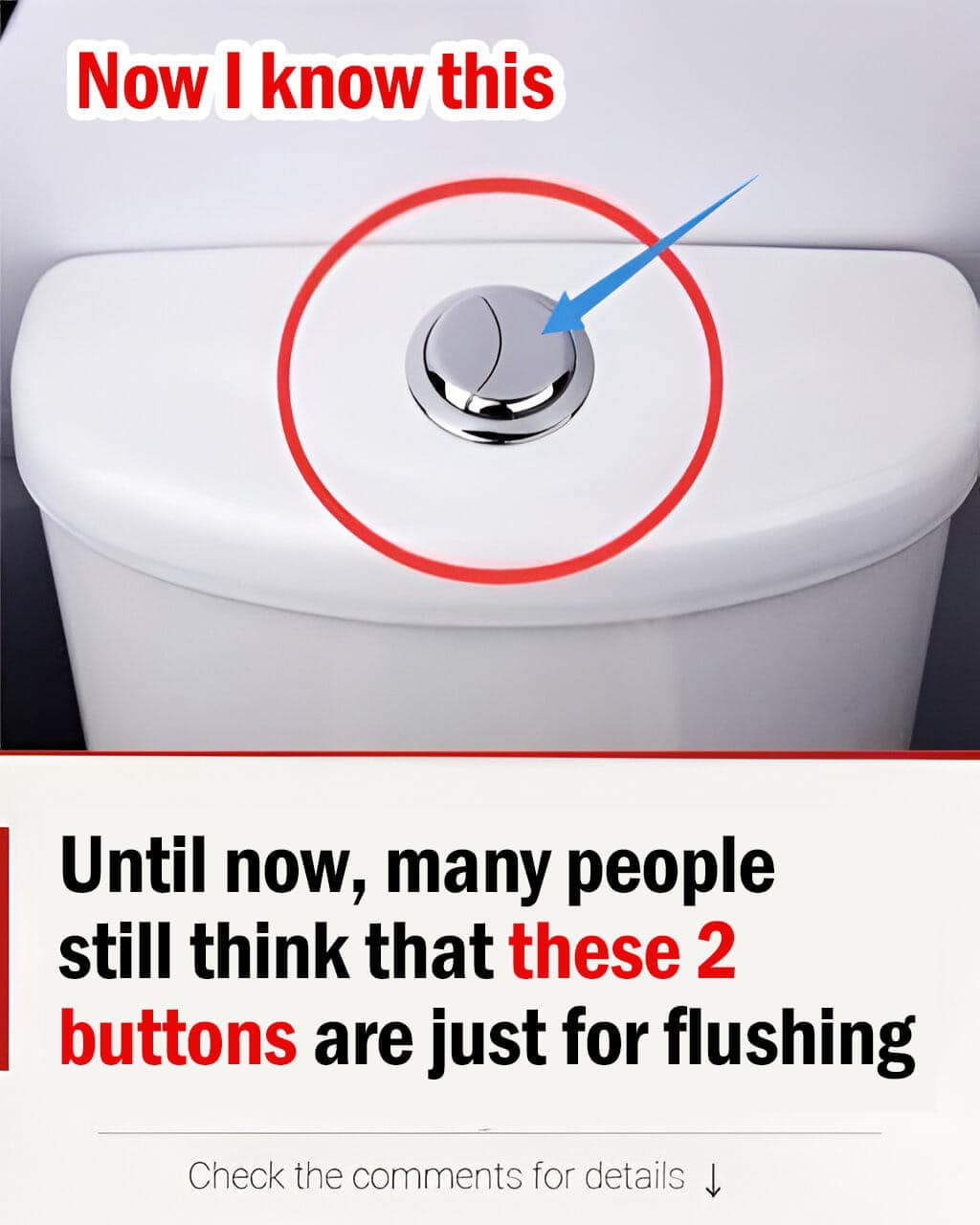
Modern bathrooms often feature dual-flush toilets, equipped with two distinct buttons on the top. While many recognize that both buttons initiate a flush, not everyone understands their specific functions and the significant water-saving benefits they offer. Proper use of these buttons can lead to substantial savings on water bills and contribute positively to environmental conservation.
Understanding Dual-Flush Toilets
Dual-flush toilets are designed with two flushing options to handle different types of waste efficiently:
-
Small Button: This button releases a lesser volume of water, typically around 0.8 to 1.2 gallons (3 to 4.5 liters), suitable for liquid waste.
-
Large Button: This button dispenses a greater amount of water, approximately 1.6 to 2.4 gallons (6 to 9 liters), intended for solid waste.
By selecting the appropriate button based on the waste type, users can significantly reduce unnecessary water consumption.
The Mechanism Behind the Design
The functionality of dual-flush toilets revolves around a straightforward yet effective mechanism: two flush valves connected to separate buttons. This design allows users to choose a flush volume that matches the waste, thereby conserving water without compromising on performance.
Origins and Adoption
The concept of the dual-flush toilet was first introduced by American designer Victor Papanek in his 1976 book, Design for the Real World. However, it was in 1980 that the idea gained practical traction in Australia—a country frequently facing drought conditions. Australians quickly adopted this innovation as part of broader water conservation efforts. Since then, dual-flush toilets have become commonplace in households and public restrooms worldwide.
Potential Water Savings
Implementing dual-flush toilets can lead to remarkable water savings. Households making the switch can conserve up to 5,000 gallons (approximately 20,000 liters) of water annually. In regions where water scarcity is a pressing issue, such conservation efforts are crucial. For homeowners, reduced water usage translates directly into lower utility bills, making it a financially savvy choice as well.
Environmental and Economic Benefits
While the initial investment in dual-flush toilets may be higher than traditional models, the long-term advantages outweigh the upfront costs. These toilets not only decrease household water consumption but also lessen the burden on sewage treatment facilities. By conserving water, individuals contribute to the sustainability of local water resources and promote environmental stewardship.
Addressing Common Confusion
Despite their widespread presence, many users remain uncertain about the proper operation of dual-flush toilets. This confusion often stems from a lack of clear instructions or labeling, leading individuals to default to using the larger flush button, thereby negating potential water savings.
Proper Usage Guidelines
To maximize the efficiency of a dual-flush toilet:
-
For Liquid Waste: Press the smaller button, often indicated by a half-circle, single drop, or a smaller icon.
-
For Solid Waste: Press the larger button, typically marked by a full circle, larger water drop symbol, or distinguished by its bigger size.
Adhering to these guidelines ensures optimal water conservation with each use.
The Broader Significance
Water is a finite and precious resource. Although it may seem abundant, factors such as climate change, population growth, and pollution are straining global water supplies. By correctly utilizing dual-flush toilets, individuals take a simple yet impactful step toward preserving this essential resource. Collective adherence to such practices can lead to substantial environmental benefits over time.
Conclusion
The dual-flush toilet exemplifies how thoughtful design can align with environmental conservation efforts. Understanding and utilizing the distinct functions of the two flush buttons not only leads to significant water and cost savings but also plays a part in the broader movement toward sustainable living. As we become more conscious of our resource consumption, embracing such innovations becomes a practical and responsible choice for both individuals and communities.





